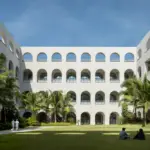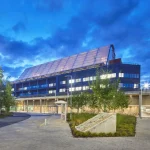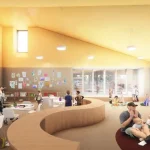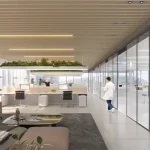Royal Liverpool University Hospital Building History, Project News, English Healthcare Property
Royal Liverpool Hospital
Merseyside Healthcare Building History, northwest England – Proposal News
29 Mar 2010
Liverpool’s Royal – 260 Years of History
Address: Prescot St, Liverpool L7 8XP, United Kingdom
The Royal Liverpool University Hospital Building
The current Royal opened in 1978 and replaced three other hospitals – the Royal Infirmary, the Royal Southern Hospital and the David Lewis Northern Hospital. It has a long and distinguished history, bound up with those of the city and University of Liverpool, and a strong tradition of medical research.
1749 The first Liverpool Infirmary, with just 30 beds, built at a cost of £2,600 on the site of what is now St George’s Hall. At the time, the port of Liverpool was only a single dock.
1774 Dr Matthew Dobson of the Infirmary confirms that the sweet taste of the urine of diabetic patients was due to an excess of a kind of sugar.
1824 The Infirmary moves to Brownlow Street, almost opposite the Royal’s current site. This second Infirmary had 230 beds and was designed by John Foster Jr, one of Liverpool’s greatest architects.
1834 Liverpool Medical School founded opposite the Infirmary.
1820s/30s New docks and warehouses built north and south of the city centre: Liverpool’s population grows and accidents increase, leading to calls for new hospitals.
1834 Northern Hospital opened in Leeds Street with 20 beds.
1842 Southern Hospital opened with 30 beds. Both the Northern and the Southern expanded and were rebuilt in later years.
All three hospitals were known for their innovations:
1857 The Southern opens a ward exclusively for children, the first of its kind to be provided in a general hospital.
1859 William Rathbone sets up the first ever district nursing service. Initially with only one nurse, he asks Florence Nightingale’s advice on how to expand. At her suggestion, Rathbone persuades the Infirmary to open a nurse training school, to train both hospital and district nurses. This was established in 1862 and was only the second Nightingale nurse training school, after London.
1883 The Northern institutes the first horse drawn ambulance service in Europe. A house doctor or medical student would accompany the driver, equipped with drugs, splints, instruments and dressings. Previously patients would be taken to hospital in at best an ordinary cab, which often worsened their injuries.
As the nineteenth century wore on, the city’s population, wealth and ambition grew, and the second Infirmary wore out.
1890 A new (by now Royal) Infirmary opens on Pembroke Place, designed by the leading architect – and Liverpool born – Alfred Waterhouse, in consultation with Florence Nightingale. Waterhouse also built the University’s Victoria Building, Manchester Town Hall and London’s Natural History Museum. The US Surgeon-General reports to his Government that ‘the Liverpool Royal Infirmary is today probably the best hospital in the world’. It is now a grade II listed building owned by the University.
1895 The first preoperative X-ray in the country is carried out at the Southern Hospital, locating a small bullet embedded in a boy’s wrist.
1902 Sir Ronald Ross of the Southern Hospital awarded the Nobel Prize for identifying mosquitoes as the source of malaria.
1917 Captain Noel Chavasse, a junior doctor at the Southern when he joined up in 1914, is posthumously awarded his second Victoria Cross, one of only three men to have achieved this honour. Chavasse Park is named after him.
1938 The Infirmary, the Southern and the Northern join forces as the Royal Liverpool United Hospitals, with the aim of being replaced by a new hospital on a central site close to the University.
1947 Site on which the current Royal now stands identified for the new hospital as part of the post war regeneration of Liverpool.
1968 Construction starts on the main new hospital buildings.
The current Royal has continued the tradition of innovation in health care. Many advances have been made here, ranging from treatments for blindness to vascular problems, breast cancer to leukaemia.
The close relationship of over a century with the University of Liverpool and the Tropical School remains, and has led to the Royal being designated as a national centre for research in infections and pancreas disease.
Royal Liverpool University Hospital Building image / information received 290310
Phone: +44 151 706 2000
Location: Royal Liverpool University Hospital, Prescot St, Liverpool, L7 8XP, Merseyside, north west England, UK
Liverpool Architecture Designs
Merseyside Architecture Designs
Liverpool Architecture Designs – chronological list
Liverpool Architecture Tours by e-architect
Royal Liverpool University Hospital Building
The Royal will have 643 beds and the Trust as a whole will have 924 beds.
Royal Liverpool University Hospital – Quotes
Quotes from key partners
Warren Bradley, Leader of Liverpool City Council, said: “We are delighted that Liverpool is going to get a 21st century hospital building. A brand-new Royal is another key milestone in the regeneration of Liverpool and an important landmark located in the Knowledge quarter area of the city.”
University of Liverpool Vice-Chancellor, Professor Sir Howard Newby, said: “The development of a new state-of-the-art hospital will enable us to build further on the excellent links we have with the Trust. Our partnership enables patients to be treated by world-leading academics at the cutting edge of research.
“The new Royal and the University’s planned £90m research facility will together form part of a health research campus, enabling the University and the Trust to contribute more effectively to the major health challenges of the 21st Century.”
Mike Farrar, chief executive of NHS Northwest, the region’s strategic health authority, said: “Patient experience should be at the heart of everything the NHS does. The new hospital gives an opportunity to ensure that people in Liverpool benefit from the best quality healthcare, in first class surroundings. This is a significant investment in NHS facilities.”
Royal Liverpool Hospital Building : main page with image
Royal Liverpool University Hospital Building – Short Timeline
March 2010-June 2010
Advertise for interest and identify three bidders to work up proposals
June 2010-October 2010
Bidders develop initial proposals in discussion with Trust staff and patient reps
October 2010-February 2011
Best two bidders develop proposals in more detail and submit final bids
March 2011-August 2011
Preferred design selected and approval obtained from local NHS and Department of Health
September 2011-February 2012
Full planning permission, contract signature and start on site
Liverpool University Buildings
Heating Infrastructure Project
Design: Levitt Bernstein
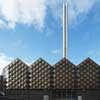
photo : Eddie Jacob
Heating Infrastructure Project
EdEn Building, Liverpool Hope University
Design: Halsall Lloyd Partnership
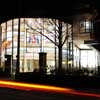
courtesy of Bob York
EdEn Building, Liverpool Hope University
Comments / photos for the Royal Liverpool University Hospital Architecture page welcome

